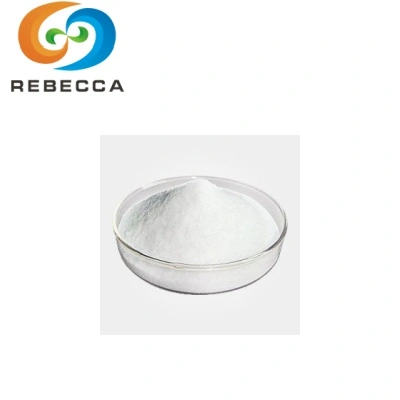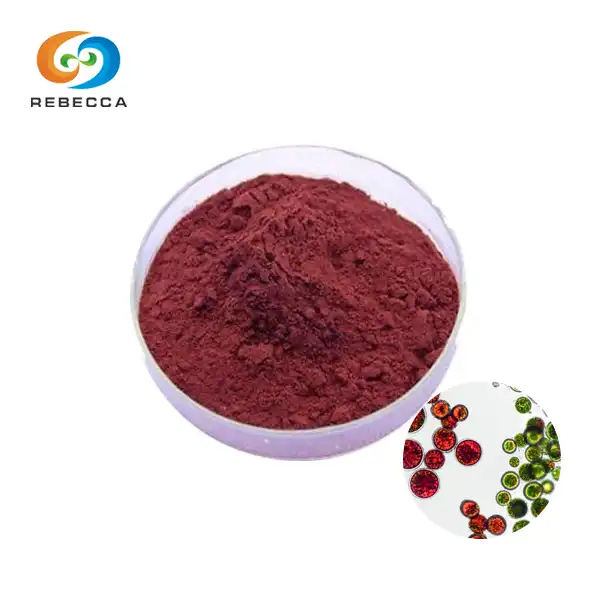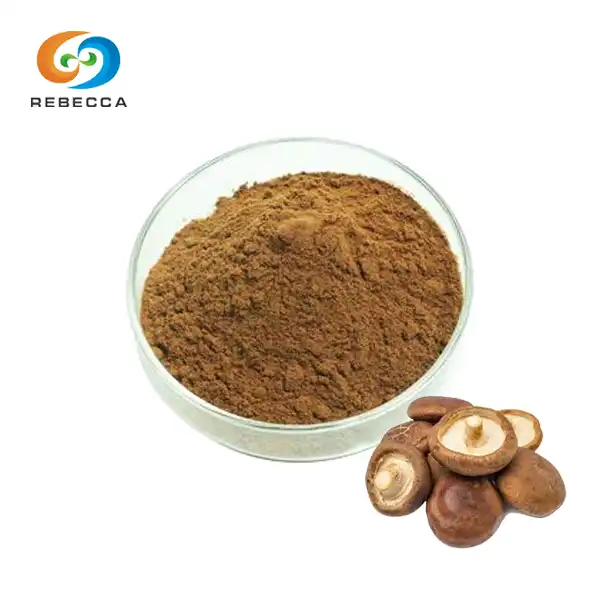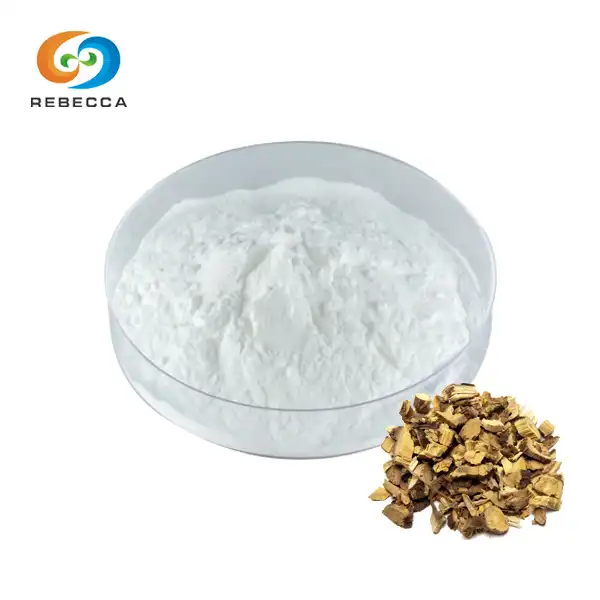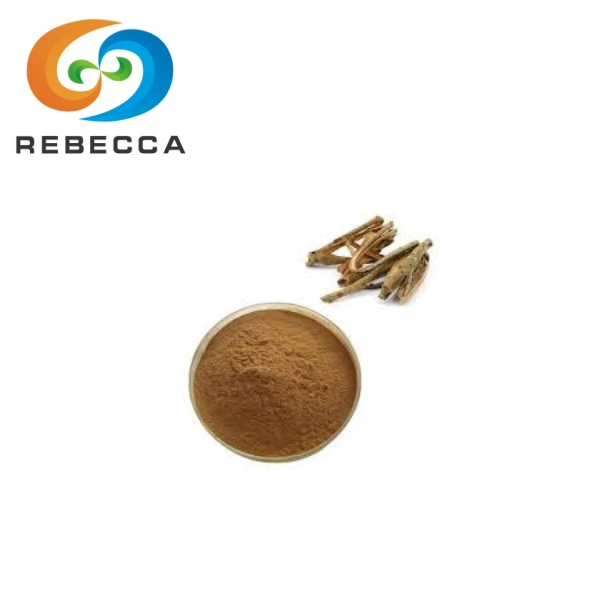What does alpha ketoglutarate do in amino acid?
Alpha-ketoglutarate (α-KG) plays a crucial role in amino acid metabolism, serving as a key intermediary in various biochemical processes. This organic compound acts as a vital amino group acceptor during transamination reactions, facilitating the breakdown and synthesis of amino acids. α-KG is instrumental in removing toxic nitrogen from the body, contributing to ammonia detoxification, and linking amino acid catabolism to energy production through the tricarboxylic acid (TCA) cycle. Its multifaceted functions make alpha ketoglutarate an indispensable component in maintaining overall cellular health and metabolic balance
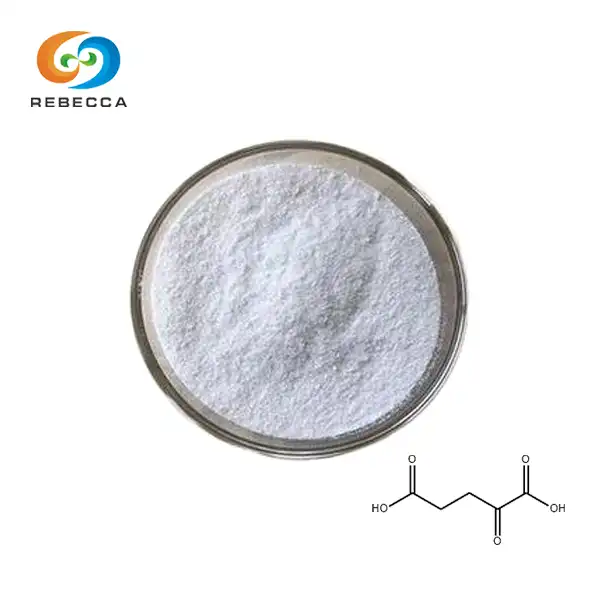
【English name】: Alpha-Ketoglutarate
【CAS No.】: 328-50-7
【Molecular Formula】: C5H6O5
【active ingredients】: Alpha-Ketoglutarate
【Specification】: Alpha-Ketoglutarate 98%
【Appearance】: White powder
Transamination (Amino Acid Breakdown + Synthesis)
Alpha-KG as amino group acceptor in transamination
Alpha-ketoglutarate serves as a primary amino group acceptor in transamination reactions, which are fundamental to amino acid metabolism. During this process, α-KG accepts an amino group from other amino acids, forming glutamate. This reaction is catalyzed by aminotransferases, also known as transaminases, which are enzymes that facilitate the transfer of amino groups between amino acids and α-keto acids.
The ability of α-KG to accept amino groups is crucial for maintaining the delicate balance of amino acids in the body. By acting as an amino group acceptor, α-KG enables the redistribution of nitrogen among different amino acids, allowing for the efficient use and recycling of these essential building blocks of proteins.
Role in synthesizing non-essential amino acids
Alpha-ketoglutarate plays a significant role in the synthesis of non-essential amino acids. Through transamination reactions, α-KG can contribute its carbon skeleton to form various amino acids, such as glutamate, glutamine, proline, and arginine. This process is vital for maintaining adequate levels of these amino acids in the body, especially when dietary intake is insufficient.
For instance, the conversion of α-KG to glutamate through the addition of an amino group is a reversible reaction that forms the basis for the synthesis of many other amino acids. This flexibility in amino acid synthesis helps the body adapt to changing nutritional needs and maintain proper protein balance.
Importance in protein metabolism and turnover
The role of alpha-ketoglutarate in transamination reactions is integral to overall protein metabolism and turnover. By facilitating the interconversion of amino acids, α-KG supports the continuous process of protein synthesis and degradation that occurs in cells. This dynamic equilibrium is essential for maintaining cellular health, repairing tissues, and adapting to changing physiological demands.
Moreover, α-KG's involvement in amino acid synthesis and breakdown contributes to the body's ability to regulate protein levels effectively. This regulation is crucial for various physiological processes, including muscle growth, wound healing, and immune function.
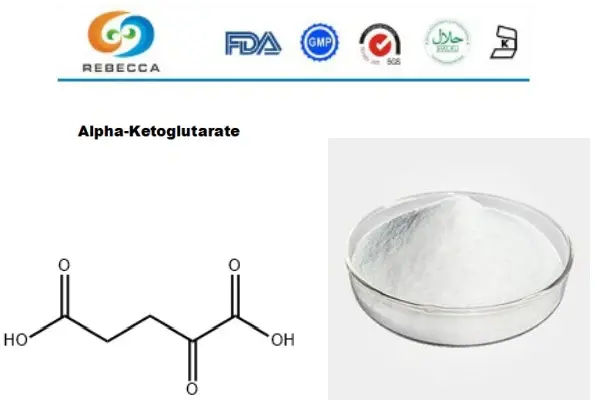
Key Step in Oxidative Deamination (Removing Toxic Nitrogen)
Alpha-KG's role in ammonia detoxification
Alpha-ketoglutarate plays a critical role in the detoxification of ammonia, a toxic byproduct of amino acid metabolism. Excess ammonia in the body can lead to serious neurological disorders and other health issues. α-KG participates in the urea cycle, a series of biochemical reactions that convert ammonia into urea, a less toxic compound that can be safely excreted by the kidneys.
In this process, α-KG acts as a substrate for the enzyme glutamate dehydrogenase, which catalyzes the reversible conversion of glutamate to α-KG. This reaction removes an amino group from glutamate, effectively reducing the amount of free ammonia in the body. By facilitating this conversion, α-KG helps maintain ammonia levels within a safe physiological range.
Glutamate dehydrogenase reaction and alpha-KG
The glutamate dehydrogenase reaction is a key step in amino acid catabolism and ammonia metabolism. This reaction involves the oxidative deamination of glutamate to form α-KG, releasing ammonia in the process. The reversibility of this reaction allows it to function in both the breakdown and synthesis of amino acids, depending on the cell's metabolic needs.
Alpha-ketoglutarate's involvement in this reaction highlights its importance in nitrogen metabolism. By serving as both a product and a substrate in the glutamate dehydrogenase reaction, α-KG helps regulate the balance between amino acid synthesis and breakdown, while simultaneously contributing to ammonia detoxification.
Preventing nitrogen toxicity in the body
The role of alpha-ketoglutarate in preventing nitrogen toxicity extends beyond its involvement in the urea cycle and glutamate dehydrogenase reaction. α-KG also participates in transamination reactions that help distribute nitrogen among various amino acids, preventing the accumulation of excess nitrogen in any single amino acid.
This distribution of nitrogen is crucial for maintaining cellular health and preventing the buildup of toxic nitrogenous compounds. By facilitating these reactions, α-KG helps ensure that nitrogen is efficiently utilized in protein synthesis or properly disposed of through the urea cycle, thereby protecting cells from the harmful effects of nitrogen toxicity.
Links Amino Acid Catabolism to Energy Production
Alpha-KG as a TCA cycle intermediate
Alpha-ketoglutarate serves as a crucial intermediate in the tricarboxylic acid (TCA) cycle, also known as the Krebs cycle or citric acid cycle. This metabolic pathway is central to cellular respiration and energy production. As a TCA cycle component, α-KG plays a pivotal role in linking amino acid catabolism to the energy-generating processes of the cell.
When amino acids are broken down, their carbon skeletons can enter the TCA cycle at various points. α-KG is one such entry point, allowing the products of amino acid catabolism to be oxidized for energy production. This integration of amino acid breakdown with the TCA cycle demonstrates the versatility of α-KG in cellular metabolism.
Connecting amino acid breakdown to ATP generation
The connection between amino acid breakdown and ATP generation is facilitated by alpha-ketoglutarate's dual role in amino acid metabolism and the TCA cycle. As amino acids are catabolized, they can be converted to α-KG or other TCA cycle intermediates. These intermediates then enter the cycle, where they undergo a series of oxidation reactions that generate reducing equivalents (NADH and FADH2).
These reducing equivalents are subsequently used in the electron transport chain to drive ATP synthesis through oxidative phosphorylation. By serving as a bridge between amino acid catabolism and the TCA cycle, α-KG enables the efficient conversion of amino acid-derived carbon skeletons into cellular energy in the form of ATP.
Alpha-KG's role in cellular energy metabolism
Beyond its direct involvement in the TCA cycle, alpha-ketoglutarate plays a broader role in cellular energy metabolism. α-KG is a key metabolite that can influence the activity of various enzymes and signaling pathways involved in energy homeostasis. For instance, α-KG can act as a co-substrate for dioxygenase enzymes, which are involved in diverse cellular processes, including hypoxia signaling and epigenetic regulation.
Furthermore, the levels of α-KG in cells can serve as an indicator of the overall metabolic state, influencing decisions about energy production and utilization. This metabolic sensing function of α-KG highlights its importance not just as a metabolic intermediate, but also as a regulator of cellular energy metabolism.
Alpha-ketoglutarate plays a multifaceted and essential role in amino acid metabolism. Its functions in transamination, ammonia detoxification, and energy production underscore its importance in maintaining cellular health and metabolic balance. By facilitating the synthesis and breakdown of amino acids, preventing nitrogen toxicity, and linking amino acid catabolism to energy generation, α-KG serves as a critical nexus in cellular metabolism.
China Alpha Ketoglutarate Supplier
Shaanxi Rebeccia is a leading supplier of high-quality alpha ketoglutarate, operating at the forefront of nutraceutical ingredient manufacturing. Our state-of-the-art production facilities utilize advanced extraction, separation, and purification technologies to ensure the highest standards of product quality and consistency. We adhere strictly to GMP and ISO standards throughout our manufacturing process, from raw material sourcing to final product delivery. Our alpha-ketoglutarate (CAS No. 328-50-7) is available as a white to yellowish powder with a purity of 99%, meeting the exacting requirements of the health supplement industry. For inquiries about our nutraceutical ingredients, please contact us at information@sxrebecca.com.
References
- Nelson, D. L., & Cox, M. M. (2017). Lehninger Principles of Biochemistry (7th ed.). W.H. Freeman and Company.
- Wu, N., Yang, M., Gaur, U., Xu, H., Yao, Y., & Li, D. (2016). Alpha-Ketoglutarate: Physiological Functions and Applications. Biomolecules & Therapeutics, 24(1), 1-8.
- Zdzisińska, B., Żurek, A., & Kandefer-Szerszeń, M. (2017). Alpha-Ketoglutarate as a Molecule with Pleiotropic Activity: Well-Known and Novel Possibilities of Therapeutic Use. Archivum Immunologiae et Therapiae Experimentalis, 65(1), 21-36.
- Wise, D. R., & Thompson, C. B. (2010). Glutamine addiction: a new therapeutic target in cancer. Trends in Biochemical Sciences, 35(8), 427-433.
- Radzki, R. P., Bienko, M., & Pierzynowski, S. G. (2009). Effect of dietary alpha-ketoglutarate on blood lipid profile during hypercholesterolaemia in rats. Scandinavian Journal of Clinical and Laboratory Investigation, 69(2), 175-180.
- Chin, R. M., Fu, X., Pai, M. Y., Vergnes, L., Hwang, H., Deng, G., ... & Huang, J. (2014). The metabolite α-ketoglutarate extends lifespan by inhibiting ATP synthase and TOR. Nature, 510(7505), 397-401.

